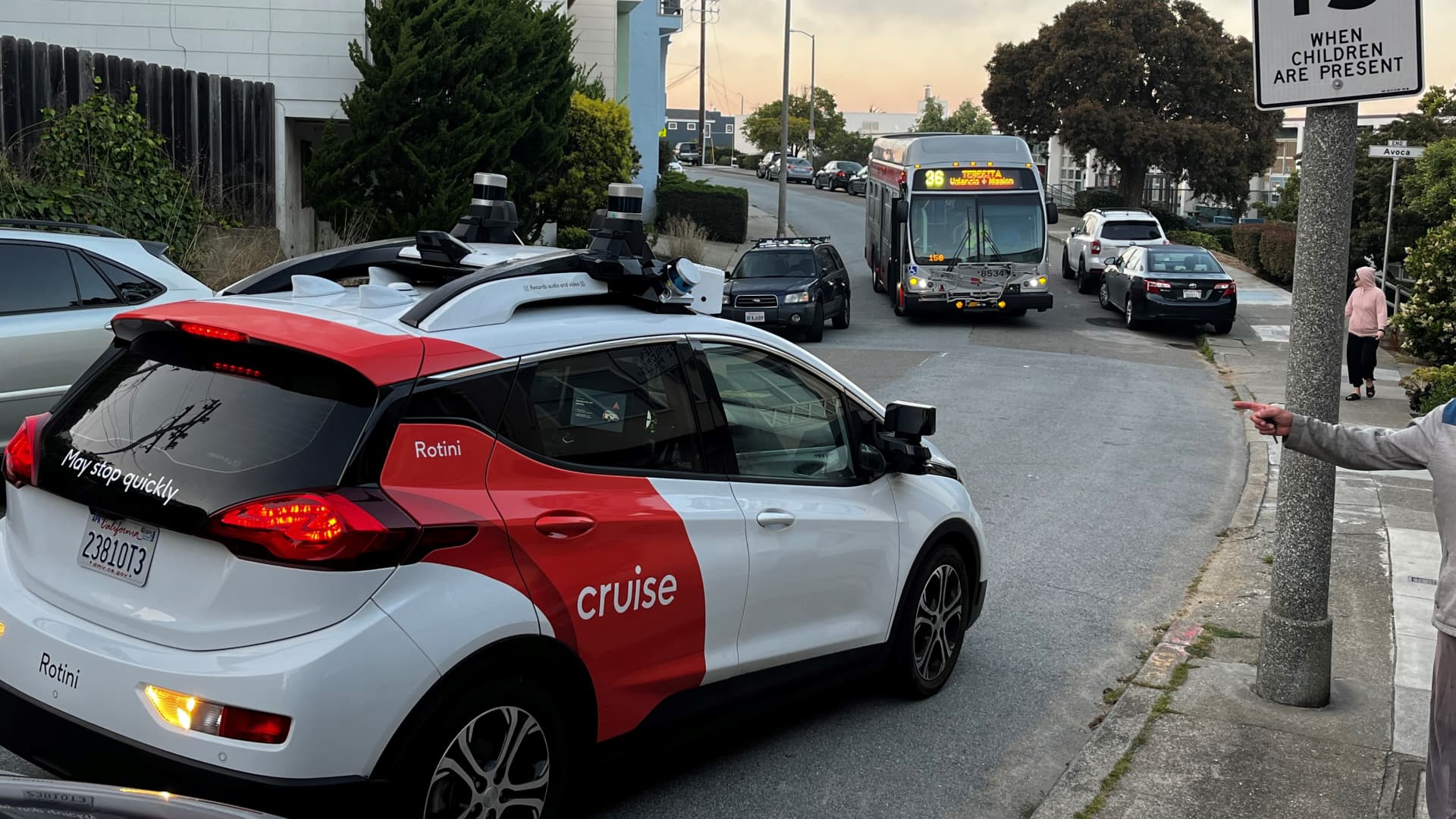Cruise CEO and founder Kyle Vogt posted comments on Hacker News on Sunday responding to allegations that his company’s robotaxis aren’t really self-driving, but instead require frequent help from humans working in a remote operations center.
First, Vogt confirmed that the General Motors-owned company does have a remote assistance team, in response to a discussion under the header, “GM’s Cruise alleged to rely on human operators to achieve ‘autonomous’ driving.”
The CEO wrote, “Cruise AVs are being remotely assisted (RA) 2-4% of the time on average, in complex urban environments. This is low enough already that there isn’t a huge cost benefit to optimizing much further, especially given how useful it is to have humans review things in certain situations.”
CNBC confirmed with Cruise spokesperson Tiffany Testo that the comments were accurate and came from the company’s CEO.
Cruise recently took the drastic move of grounding all of its driverless operations following a collision that injured a pedestrian in San Francisco on October 2. The collision and Cruise’s disclosures around it led to state regulators stripping the company of its permits to operate driverless vehicles in California, unless there is a driver aboard.
The DMV previously said its decision was based on several factors, citing four regulations that allow suspension in the event “the Department determines the manufacturer’s vehicles are not safe for the public’s operation,” and “the manufacturer has misrepresented any information related to safety of the autonomous technology of its vehicles.”
As NBC News previously reported, California Department of Motor Vehicles accused Cruise of failing to show them a full video depicting the October 2 collision, during which a pedestrian was thrown into the path of the Cruise robotaxi by a human driver in a different car who hit her first.
During that incident, Cruise previously told NBC, its vehicle “braked aggressively before impact and because it detected a collision” but then tried to pull over and in the process pulled the pedestrian forward about 20 feet.
Rival Waymo, which is owned by Google parent company Alphabet, continues to operate in the city.
How often do remote workers intervene?
A New York Times story followed last week diving into issues within Cruise that may have led to the safety issues, and setback for Cruise’s reputation and business. The story included a stat that at Cruise, workers intervened to help the company’s cars every 2.5 to five miles.
Vogt explained on Hacker News that the stat was a reference to how frequently Cruise robotaxis initiate a remote assistance session.
He wrote, “Of those, many are resolved by the AV itself before the human even looks at things, since we often have the AV initiate proactively and before it is certain it will need help. Many sessions are quick confirmation requests (it is ok to proceed?) that are resolved in seconds. There are some that take longer and involve guiding the AV through tricky situations. Again, in aggregate this is 2-4% of time in driverless mode.”
CNBC asked Cruise to confirm and provide further details on Monday.
The Cruise spokesperson wrote in an e-mail, that a “remote assistance” session is triggered roughly every four to five miles, not every 2.5 miles, in Cruise’s driverless fleet.
“Often times the AV proactively initiates these before it is certain it will need help such as when the AV’s intended path is obstructed (e.g construction blockages or detours) or if it needs help identifying an object,” she wrote. “Remote assistance is in session about 2-4% of the time the AV is on the road, which is minimal, and in those cases the RA advisor is providing wayfinding intel to the AV, not controlling it remotely.”
CNBC also asked Cruise for information about typical response time for remote operations, and how remote assistance workers at Cruise are trained.
“More than 98% of sessions are answered within 3 seconds,” the spokesperson said.
She added, “RA advisors undergo a background check and driving record check and must complete two weeks of comprehensive training prior to starting, consisting of classroom training, scenario-based exercises, live shadowing and knowledge-based assessments. Advisors also receive ongoing training and undergo supplemental training whenever there is a new feature or update. Regular reviews, refreshers and audits are conducted to ensure high performance.”
As far as the ratio of remote assistance advisors to driverless vehicles on the road, the Cruise spokesperson said, “During driverless operations there was roughly 1 remote assistant agent for every 15-20 driverless AVs.”
George Mason University professor and autonomous systems expert Missy Cummings, who was previously a safety advisor to the federal vehicle safety agency (NHTSA), told CNBC that whether or not the public still considers Cruise vehicles self-driving, it has been an “industry standard” for humans to be on call, monitoring the operations of drones, robotics, and now autonomous or semi-autonomous vehicles.
“I start to get concerned,” she said, “about how we’re using humans when we are using them. In other domains, we’ve seen issues where, for example, an air traffic controller maybe fell asleep on the job.”
Cummings also said it would be very important to understand whether Cruise vehicles involved in any collisions — especially in the October pedestrian collision — called back to remote operations for help. “I would like to know whether a human was notified at all and what the human’s actions were in the remote operations center.”
Cruise declined to say whether the October 2 incident triggered a remote assistant call, whether a human advisor made decisions to authorize the vehicle’s movement, or whether any Cruise employee had called 911.
The company spokesperson said, “We have initiated third-party reviews of the October 2 incident and are working with NHTSA on their investigation as well. In respect of those processes, we will await the findings of those reviews before commenting further.”
GM said last month that the company has lost roughly $1.9 billion on Cruise in the first nine months of this year, including $732 million in the third quarter alone.
Read the full article here







